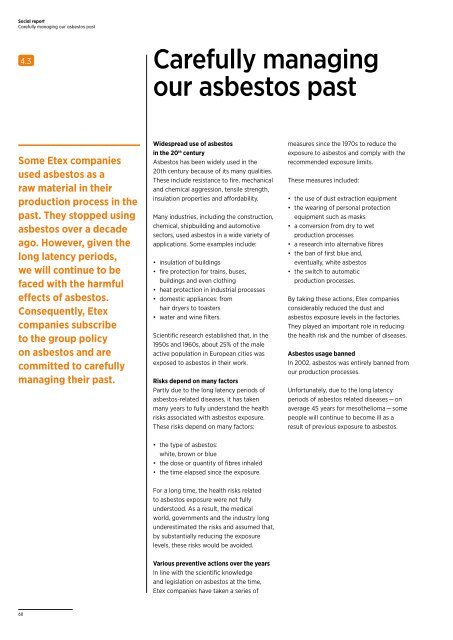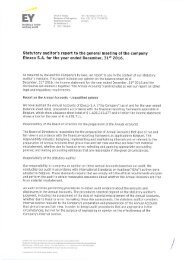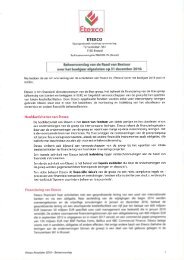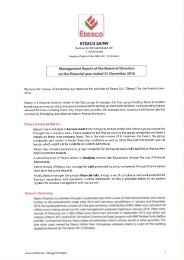Annual Report 2014
This is the 2014 annual report of Etex Group
This is the 2014 annual report of Etex Group
You also want an ePaper? Increase the reach of your titles
YUMPU automatically turns print PDFs into web optimized ePapers that Google loves.
Social report<br />
Carefully managing our asbestos past<br />
4.3<br />
Carefully managing<br />
our asbestos past<br />
Some Etex companies<br />
used asbestos as a<br />
raw material in their<br />
production process in the<br />
past. They stopped using<br />
asbestos over a decade<br />
ago. However, given the<br />
long latency periods,<br />
we will continue to be<br />
faced with the harmful<br />
effects of asbestos.<br />
Consequently, Etex<br />
companies subscribe<br />
to the group policy<br />
on asbestos and are<br />
committed to carefully<br />
managing their past.<br />
Widespread use of asbestos<br />
in the 20 th century<br />
Asbestos has been widely used in the<br />
20th century because of its many qualities.<br />
These include resistance to fire, mechanical<br />
and chemical aggression, tensile strength,<br />
insulation properties and affordability.<br />
Many industries, including the construction,<br />
chemical, shipbuilding and automotive<br />
sectors, used asbestos in a wide variety of<br />
applications. Some examples include:<br />
• insulation of buildings<br />
• fire protection for trains, buses,<br />
buildings and even clothing<br />
• heat protection in industrial processes<br />
• domestic appliances: from<br />
hair dryers to toasters<br />
• water and wine filters.<br />
Scientific research established that, in the<br />
1950s and 1960s, about 25% of the male<br />
active population in European cities was<br />
exposed to asbestos in their work.<br />
Risks depend on many factors<br />
Partly due to the long latency periods of<br />
asbestos-related diseases, it has taken<br />
many years to fully understand the health<br />
risks associated with asbestos exposure.<br />
These risks depend on many factors:<br />
measures since the 1970s to reduce the<br />
exposure to asbestos and comply with the<br />
recommended exposure limits.<br />
These measures included:<br />
• the use of dust extraction equipment<br />
• the wearing of personal protection<br />
equipment such as masks<br />
• a conversion from dry to wet<br />
production processes<br />
• a research into alternative fibres<br />
• the ban of first blue and,<br />
eventually, white asbestos<br />
• the switch to automatic<br />
production processes.<br />
By taking these actions, Etex companies<br />
considerably reduced the dust and<br />
asbestos exposure levels in the factories.<br />
They played an important role in reducing<br />
the health risk and the number of diseases.<br />
Asbestos usage banned<br />
In 2002, asbestos was entirely banned from<br />
our production processes.<br />
Unfortunately, due to the long latency<br />
periods of asbestos related diseases — on<br />
average 45 years for mesothelioma — some<br />
people will continue to become ill as a<br />
result of previous exposure to asbestos.<br />
• the type of asbestos:<br />
white, brown or blue<br />
• the dose or quantity of fibres inhaled<br />
• the time elapsed since the exposure.<br />
For a long time, the health risks related<br />
to asbestos exposure were not fully<br />
understood. As a result, the medical<br />
world, governments and the industry long<br />
underestimated the risks and assumed that,<br />
by substantially reducing the exposure<br />
levels, these risks would be avoided.<br />
Various preventive actions over the years<br />
In line with the scientific knowledge<br />
and legislation on asbestos at the time,<br />
Etex companies have taken a series of<br />
60

















